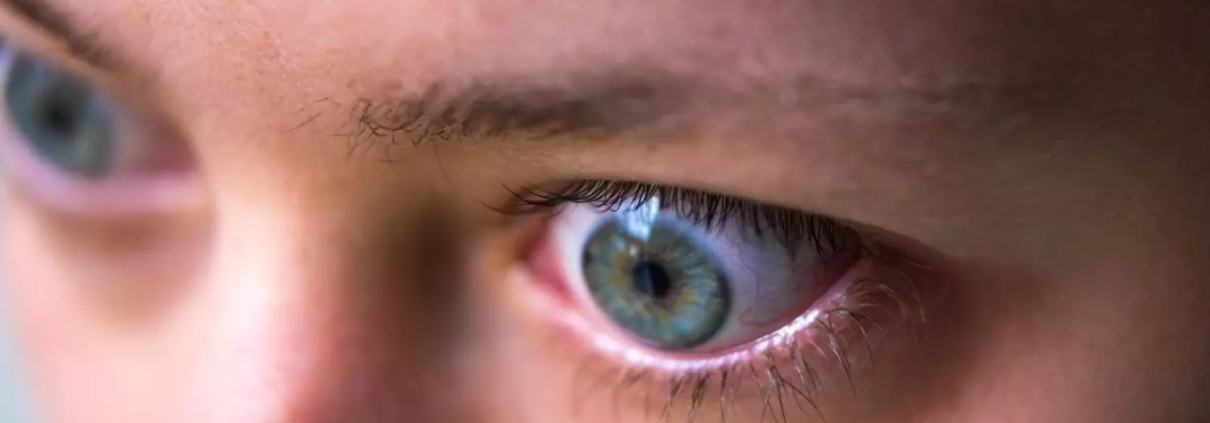Teprotumumab: A game-changer in thyroid eye disease treatment, treats across phenotypes, study finds

USA: In a groundbreaking development for patients suffering from thyroid eye disease (TED), recent clinical trials have demonstrated the remarkable efficacy of Teprotumumab across various phenotypes of the condition. The findings, presented during an oral presentation at the American Association of Clinical Endocrinology, offer new hope to individuals grappling with the debilitating symptoms of this autoimmune disorder.
The new data from the post-hoc analysis suggests that teprotumumab (Tepezza) works equally well in older and younger patients with thyroid eye disease, irrespective of TED duration.
The researchers observed comparable improvements with teprotumumab among patients with age-related phenotypic I or II thyroid eye disease.
“At 24 weeks, 81% of patients with phenotypic I thyroid eye disease (younger than 40 years) and 73.7% of those with phenotypic II disease (40 and older) had overall improvements with teprotumumab, a difference that was not statistically significant,” Soheab Ugradar, MD, of Thrive Health in Beverly Hills, California, reported.
Results were comparable between the older and younger patients for diplopia, clinical activity score, proptosis, and Graves’ Ophthalmology Quality of Life score.
Thyroid eye disease, also known as Graves’ orbitopathy, is a distressing condition characterized by inflammation and swelling of the tissues around the eyes. It commonly affects individuals with thyroid disorders, particularly those with Graves’ disease, an autoimmune condition causing hyperthyroidism. TED can lead to significant visual impairment, disfigurement, and decreased quality of life for patients.
Phenotypic I thyroid eye disease involves orbital fat expansion and proptosis with minimal to no periorbital inflammation or diplopia, with low dysthyroid optic neuropathy. Phenotypic II thyroid eye disease involves extraocular muscle enlargement and fibrosis, periorbital inflammation, and diplopia, with higher dysthyroid optic neuropathy rates.
Teprotumumab, a monoclonal antibody developed by Horizon Therapeutics, has emerged as a promising therapeutic option for individuals battling TED. The drug works by targeting the insulin-like growth factor 1 receptor (IGF-1R), which plays an important role in the pathogenesis of the disease. By inhibiting IGF-1R signaling, Teprotumumab effectively reduces inflammation and tissue expansion around the eyes.
For this analysis, Ugradar and the team identified patients in the randomized OPTIC trial and the open-label OPTIC-X trial, in which patients received eight infusions of teprotumumab.
The study comprised 121 patients, 22 with phenotypic 1 disease and 99 with phenotypic 2 disease. The mean age for patients with type I disease was 32.8, 59.1% were women, the mean time since diagnosis was 8.6 months, and the mean clinical activity score was 4.1. For the patients with type II disease, the mean age was 54.5, 72.7% were women, the mean clinical activity score was 4.8, and the mean time since diagnosis was 7.7 months.
The following were the key findings of the study:
- At 24 weeks, the least squares mean change in proptosis was -3.46 mm for the younger patients and -3.22 mm for the older patients. A change of 3 mm, considered the usual correction achieved with surgery, was clinically meaningful.
- For the quality-of-life score, the total least squares mean change at week 24 was 19.09 points in the younger patients and 15.96 points in the older patients.
- For 42 patients with longer-duration thyroid eye disease and clinical activity scores of ≤1 (mean age 32 for the younger patients and 56.1 for the older patients), responses at week 24 were similar between the younger and older patients for proptosis (61.5% versus 62.1%, respectively) and diplopia (50% versus 40%).
- The least squares mean change in proptosis was -2.0 mm for the younger patients and -2.6 mm for the older patients, and the least squares mean change in quality-of-life score appearance subscale was 12.95 points and 8.32 points, respectively, and 5 points and 8.68 points for the visual function subscale.
The promising results of these clinical trials have ignited excitement within the medical community and among patients alike. With Teprotumumab poised to become a cornerstone of thyroid eye disease management, individuals grappling with this challenging condition can look forward to improved outcomes and enhanced quality of life. As further research unfolds, the potential of this groundbreaking therapy to transform the landscape of TED treatment appears increasingly tangible.
Reference:
Ugradar S, et al “Efficacy of teprotumumab in phenotype I vs type II thyroid eye disease” AACE 2024.



